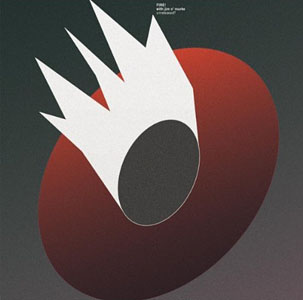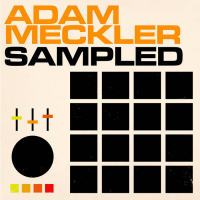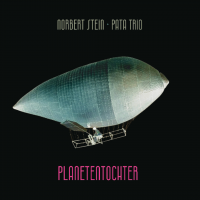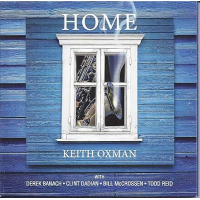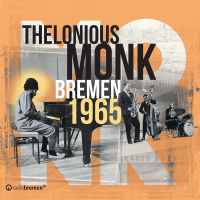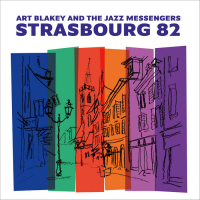Home » Jazz Articles » Extended Analysis » Modern Jazz Quartet: Modern Jazz Quartet: The Complete A...
Modern Jazz Quartet: Modern Jazz Quartet: The Complete Atlantic Studio Recordings 1956-64
 The Modern Jazz Quartet
The Modern Jazz Quartet The Complete Atlantic Studio Recordings of The Modern Jazz Quartet 1956-64
Mosaic Records
2011
They were diverse in talent and temperament. John Lewis, the quiet and determined westerner, who told sound stories with his linear and logical blues-based pianisms; Milt Jackson, the baggy eyed, Motor City vibraharp virtuoso; Percy Heath, the Philly bassist with deep, in-the-pocket basslines; Kenny Clarke, the bomb-dropping blacksmith of the beat from Pittsburgh; and Connie Kay, the New York groovemaster of West Indian descent who could throw down with bebop or Ruth Brown. Somehow those fiercely independent individuals coalesced as the Modern Jazz Quartet. Their syncopated science, telepathic interplay, and monastic commitment to swing, beautifully blended African-American jazz and blues with European classical compositional forms, particularly, the fugue. The group worked for 48 incredible years with one break, until Jackson's death in 1999. Only the 50-year reign of Duke Ellington's orchestra lasted longer.
The group grew out of trumpeter Dizzy Gillespie's big band in the 1940s. Lewis and Clarke (no, not the explorers), Jackson and bassist Ray Brown were the rhythm section for the orchestra, and when the horns needed a break from the lip-blistering arrangements, the foursome would perform short, ear-catching numbers that pleased the musicians and the audience. But it wasn't until 1952, when Heath replaced Brown, that the group morphed from the Milt Jackson Quartet to the Modern Jazz Quartet.
The change was crucial. Under Jackson's leadership, the group was essentially a "blowing" combo, content with playing spare bop and blues arrangements. When Lewis, armed with his advanced degree from the Manhattan School of Music, and his experiences as Gillespie's arranger, who had participated in the historic "birth of the cool" sessions, became the music director, he—contrary to what many still think—integrated formal music devices such as Bach-style fugues and Balkan folk idioms onto the existing jazz structures. It wasn't about making jazz respectable: it was about a group of African-American musicians taking elements of world music into their own jazz idiom to make great art.
And make great art they did! With the quiet dignity of their dress, and impeccable stage manners, the MJQ was one of jazz's great "crossover" groups, headlining in prestigious concert halls and classical festivals. Its early Prestige recordings, in the early to mid-1950s, mostly with Clarke on drums, put them on the map, with the first appearances of Lewis' greatest composition, "Django," and Jackson's "True Blues." The group's experiments with the jazz-meets-fugue were choppy at first, but the musicians got it together, largely because Clarke, who didn't like being hemmed in by Lewis' ideas, split for Paris. And in walked Kay, an athletic, light-limbed drummer who made his bones playing with pianist Randy Weston, and who was the house drummer for a fledgling R&B label named Atlantic Records. Atlantic was run by two Turkish brothers, Ahmet and Nesuhi Ertegun, the latter signing the ensemble. He gave them a higher profile, and a bigger recording budget than they ever got at Prestige. And as they say, the rest is history, two decades of it, preserved on this magnificent box set.
Consisting of seven discs, containing 105 tracks of master, alternate and unreleased recordings from 15 albums, this set offers an evolutionary view of how the MJQ negotiated the conceptual, thematic and musical challenges of group improvisation, based on jazz and non-jazz sources, in an era soon to be dominated by the avant-garde, hard bop, soul, rock and pop.
Anchored by Heath's sure-footed basslines and Kay's spare-is-more drumming (check out the way Lewis added chimes, Asian percussion and exotic cymbals to Kay's drumkit, much in the same way Duke Ellington did with Sonny Greer), the source of MJQ's power lay in the eternal—and creative—tension between Lewis and Jackson: the former musically profiled as a "soft," Count Basie-style soloist, contrasted by the joyful noise of Jackson's shimmering, sanctified, bop-laced, upsouth vibes. But this description obscures the non-abstract truth of the deep blueseness of Lewis' Southwestern sound. It also overlooks perhaps the most profound truth about the group: it is precisely Lewis' cool, crystalline arrangements that provide the perfect contrast for Jackson's fiery improvisations. This is not to diss the vibe master. But a cursory hearing of Jackson's projects as a leader outside the MJQ milieu confirms that point. Though that tension would boil over (egged on by decades of the chant "let Milt blow") and cause the 1974 break-up, the success of the MJQ is unimaginable without it.
When the group released its first Atlantic LP, Fontessa, in 1956, it had finally gelled on the overall group with Kay in the mix. This recording contained standards that would stay in the MJQ book for years: the bouncy "Woody 'N You," the ballads "Angel Eyes," "Willow Weep for Me" and "Over the Rainbow," and the Jackson showstopper, "Bluesology." But its centerpiece was the 11-minute title track: A Lewis-penned work inspired by characters of the Italian Commedia del Arte; a music form where troubadours would sing in specific characters with lightly-sketched, improvisational settings. In Lewis' mind, that form fit nicely in the jazz-blues idiom, as evidenced by this multi-suite work, which heralded the type of conceptual projects the MJQ would later produce.
Released that same year, The Modern Jazz Quartet at Music Inn was recorded in the auditorium of the Music Barn at the Lenox School of jazz, which Lewis co-founded. The clarinetist Jimmy Giuffre was the guest artist on the date. His cool clarinet tones fit perfectly with the MJQ sound on "Serenade," a pastoral Lewis piece composed with no improvisation, the mid-tempo "A Fugue for Music Inn," and peppery "Fun." "Two Degrees East, Three Degrees West " and "Sun Dance," Lewis' homage to the Hopi Indians," would soon exit the MJQ catalog, but "Variation No.1 On God Rest Ye Merry Gentleman" AKA "England's Carol," would be a crowd-pleaser for years to come. For its follow-up, The Modern Jazz Quartet at Music Inn, Volume 2, (its first stereo recording), the foursome is joined by an old friend, tenor saxophonist Sonny Rollins, who recorded with the group on the Prestige label in 1953. On Jackson's signature piece, "Bag's Groove," and on the Dizzy Gillespie hit "A Night in Tunisia," Rollins' pecking, but powerful phrases would display the full flower of what composer and frequent Lewis collaborator Gunther Schuller termed "thematic improvisation." (It should noted that for some reason, Rollins was recorded before a live audience on a separate date).
The Music Inn was also the recording studio for several MJQ LPs. Its eponymously-titled 1957 LP contains a medley of pop songs including "My Old Flame" and "Body and Soul;" a fine rendition of Lewis' "La Ronde: Drums:" a rare Connie Kay spotlight, where the contrast between his lickety-split velvet drumming and Clarke's heavier style couldn't be more clear; the first appearance of "Bag's Groove," and the lesser-known riff-like "Baden-Baden." "The Comedy" features actress-then-singer Diahann Carroll, who was married to the group's manager Monte Kay, and is a further exploration of the characters inspired by the Commedia dell Arte. On the enduring soundtrack One Never Knows (No Sun in Venice), directed by Roger Vadim, and set in Venice, Lewis composes several short musical sketches that illuminate and amplify the visual storyline, and retains the signature sound of the group, and contributes a few timeless compositions to the band book. "The Funky Golden Striker" is pulsed by a New Orleans, second line beat reminiscent of the Big Easy ditty "Snag It." "Cortege" is a solemn and syncopated number that melds the local Latin processions honoring the dead and the funeral dirges of New Orleans. "Three Windows" is an intricate triple fugue that was revisited two decades later in full orchestral form on a 1987 album bearing the same name.
The 1959 album Pyramid, widely regarded as the group's best studio date, is a brilliant summation of the cool, swinging clarity the foursome achieved to that point. Duke Ellington's "It Don't Mean a Thing (If It Ain't Got that Swing) and the standard "How High The Moon," a Jackson showcase, highlight how the group can update and personalize material from other composers. But it is the originals that make this recording stand out. The title track, written by Ray Brown, with singer Mahalia Jackson in mind, is a rising and falling slow number that beautifully sits on the fence that separates gospel and the blues. Jackson's solo shows off his sanctified syncopations, but Lewis also displays his church cred with a moving solo rich with the type of soul-stirring pianisms heard in the sound of Bobby Timmons, Ramsey Lewis and Ray Bryant.
The most controversial aspect of the MJQ—and by extension, John Lewis—was its melding of classical devices to jazz; mainly the fugue: a baroque form where a voice or instrument states a theme, followed by another instrument or voice, in a succinct pattern resembling a musical relay race. This form reached its highest peak with Bach. And what Lewis heard in this form was the intense contrapuntal pull that is also found in jazz. What many moldy-figs saw as a forced-marriage between two unmeshable types of music, we now hear an oftentimes successful hybrid based on common elements from each genre.
When the MJQ first tried its classical-meets-jazz style on its first contrapuntal composition, "Vendome," in the early 1950s, the pace of the track was slow and tentative. A full decade later, the group runs through the fugal races with no problem, as evidenced by two LPs augmented by classical players. Third Stream Music (the term was coined by Gunther Schuller, not Lewis) marked the return of clarinetist Jimmy Giuffre and his trio, featuring the mellow-toned guitarist Jim Hall on the melodically shifting "Da Capo," which British writer Max Harrison wrote was, "based on development of two contrasted ideas," and the rondo-like "Fine." "Exposure," "Sketch," and "Conservation" featured the MJQ with the Beaux Arts Quartet. In this chamber setting, conducted by Lewis, the balance between notation and improvisation is finely walked on both sides of the idiomatic pond, especially in the spectral, ten minute-plus Schuller composition "Conversations."
In 1960 the quartet upped the classical-jazz ante with The Modern Jazz Quartet with Orchestra, recorded in Germany with a full symphony orchestra. French critic Andre Hodeir's shout-out is interesting, but hardly a blues at all. The German composer/conductor Werner Heider's "Divertimento," which contains spirited, boppish solos from Lewis and Jackson, fares slightly better. And Schuller's three-movement "Concertino For Jazz Orchestra" dances on the outer limits of tonality. Lewis' orchestral adaptation of "England's Carol," is the highlight of this aural experiment.
With the folding of the Lenox School of Jazz in the early 1960s, the group recorded its studio projects in New York. Lonely Woman featured some interesting Lewis compositions that dealt with jazz counterpoint ("Fugato"), a selection from a ballet ("Animal Dance), a TV show starring Harry Belafonte ("New York 19"), and the first recording of Lewis Adriatic's tango-tempoed "Trieste." But the most memorable selection on this date was a complete reimagination of the title track, composed by the iconoclastic alto saxophonist/composer Ornette Coleman, who Lewis championed when every other music critic ran for cover. Lewis and company stay true to the haunting melody, but the group adds an R&B-like groove under the solo section, giving the track a danceable bounce similar to those heard on any Motown track of that period. In contrast, one of the oddest MJQ LPs is A Quartet Is a Quartet Is a Quartet, featuring the Quartetto Di Milano and the Hungarian Gypsy Quartet, capped by four MJQ tracks (Jackson's "Reunion Blues," Lewis' "Concorde," "A Winter Tale" and Jerome Kern's "Yesterday"). Obviously Lewis was trying to make the point that the aforementioned ensembles shared more than they contrasted.
Released in 1963, The Sheriff is an interesting LP. Half of it contains typical MJQ fare, including the standard, "Mean to Me." "Natural Affection" and "Donnie's Theme" are two Lewis numbers composed for a William Inge Broadway play, contrasted by "In A Crowd" and the implosive, Horace Silver-like title track, dedicated to Martin Luther King. The rest of the tracks are the MJQ's first forays into the bossa nova, which exploded in the US in the early 1960s. Luis Bonfa's "Carnival, AKA Morning of the Carnival" swings with the soft syncopations of Brazilian saudade, a Portuguese term that roughly translates into English as "blues." The esteemed Brazilian composer Heitor Villa-Lobos' "Bachianas Brasilieras" is beautifully and skillfully adapted by Lewis to the jazz idiom, with its all of its mid-tempo, contrapuntal complexity and earthy Afro-Amazonian airs intact.
The MJQ delves further into the Latin-Brazilian bag on Collaboration, its 1964 LP featuring Brazilian guitarist Laurindo Almedia, who the group met the year before at the Monterey Jazz Festival, where Lewis was the musical director. Blessed with a classically-tinged touch and a thorough understanding of Afro-Brazilian and Afro-American idioms, Almeida fit right in with the quartet. Save for "Silver" penned by Lewis in honor of Professor Jim Silver, author of The Closed Society, an examination of the evils of segregation in Mississippi, "Valeria," and a subtle, note-for-note rendition of Bach's "Fugue in A Minor," Lewis and company head south of the border on the remaining tracks. Kay's dancing and delicate drumming and Almeida's New World-Iberian solos together enhance Antonio Carlos Jobim's "One Note Samba."
Almeida and the quartet turn in their best performance on an impassioned and ingenious rendition of Joaquin Rodrigo's "Concierto de Aranjuez," which is rivaled only by the Miles Davis/Gil Evans version. The last album featured in this anthology, The Modern Jazz Quartet Plays George Gershwin's Porgy and Bess, released in 1965, brings the foursome back to its American popular song roots, with "Summertime" being the longest-lived George Gershwin selection in the band book. The MJQ's rehearsal regimen was so thorough that the few existing alternate takes of "Bluesology," "Woody N' You," "Sun Dance," "La Cantatrice," and "Harlequin," interesting as they may be, are anticlimactic—clearly, the best tracks were chosen.
After its stint with Atlantic, the quartet signed with the Apple, a label owned by the Beatles, resigned with Atlantic in the 1970s, broke up in 1974, re-formed on Norman Granz's Pablo Records in the 1980s, reunited with producer Nesuhi Ertegun on his East West label, and signed yet again with Atlantic in the 1990s, before death would claim each member. This collection excludes some studio records and live material—mostly because of song redundancy, although the 1965 big band LP, Jazz Dialogue, featuring the boogaloo track "Home," which was the theme song for NBC's Today Show, would have been a worthy addition. That quibble aside, this is a well-produced and remastered box set, and a valuable document chronicling the zenith of an important and enduring musical institution.
Tracks: CD1 Fontessa: Versailles (Porte de Versailles); Angel Eyes; Fontessa; Over the Rainbow; Bluesology; Willow Weep for Me; Woody 'n You. The Modern Jazz Quartet at Music Inn: Oh Bess, Oh Where's My Bess; A Fugue for Music Inn; Two Degrees East; Serenade; Fun; Sun Dance; The Man That Got Away; A Morning in Paris; Variation No. 1 on God Rest Ye Merry Gentlemen. CD2 The Modern Jazz Quartet: Medley (They Say It's Wonderful/How Deep is the Ocean/(I Don't Stand) A Ghost of a Chance With You/My Old Flame/Body and Soul); Between the Devil and the Deep Blue Sea; La Ronde Drums; A Night in Tunisia; Yesterdays; Bags' Groove; Baden-Baden. One Never Knows (No Sun in Venice: The Golden Striker; One Never Knows; The Rose Truc; Cortege; Venice; Three Windows. CD3 The Modern Jazz Quartet at Music Inn, Volume 2: Medley (Stardust/I Can't Get Started/Lover Man); Yardbird Suite; Midsummer; Festival Sketch; Bags' Groove; A Night in Tunisia. Pyramid: Vendome; Pyramid; It Don't Mean a Thing (If It Ain't Got That Swing); Django; How High the Moon; Romaine. CD4 Third Stream Music: Da Capo; Fine; Exposure; Sketch; Conversation. The Modern Jazz Quartet and Orchestra: Around the Blues; Divertimento; England's Carol; Concertino For Jazz Quartet and Orchestra, First Movement; Concertino For Jazz Quartet and Orchestra, Second Movement (Passacaglia); Concertino For Jazz Quartet and Orchestra, Third Movement. CD5 The Comedy: Spanish Steps; Columbine; Pulcinella; Pierrot; La Cantatrice; Harlequin; Piazza Navona. Lonely Woman: Lonely Woman; Animal Dance; New York 19; Belkis; Why Are You Blue; Fugato; Lamb, Leopard; Trieste. CD6 The Sheriff: The Sheriff; In a Crowd; Bachianas Brasilieras; Mean to Me; Natural Affection; Donnie's Theme; Carnival. A Quartet is a Quartet is a Quartet: Reunion Blues; Winter Tale; Concorde; Yesterdays. The Alternate Takes: Bluesology (stereo take); Woody 'n You (stereo take); Sun Dance (Stereo take); Django (mono take); La Cantatrice (mono take); Harlequin (mono take). CD7 Collaboration: Silver; Trieste; Valeria; Fugue in A Minor; One Note Samba; Foi a Saudade; Concierto de Aranjuez. The Modern Jazz Quartet Plays George Gershwin's Porgy and Bess: Summertime; Bess, You is My Woman; My Man's Gone Now; I Loves You Porgy; It Ain't Necessarily So; Oh Bess, Oh Where's My Bess; There's a Boat Dat's Leavin' Soon.
Personnel: Milt Jackson: vibraharp; John Lewis: piano, conductor (CD4#5);; Percy Heath: bass; Connie Kay: drums; Jimmy Giuffre: clarinet (CD1#9, CD1#11-12); Sonny Rollins: tenor saxophone (CD3#5-6); Gerard Tarack: first violin (CD4#5-6); Alan Martin: second violin (CD4#5-6); Carl Eberl: viola (CD4#5-6); Joe Tekula: cello (CD4#5-6); Gunther Schuller: conductor (CD4#3, CD4#6); Bill McColl: clarinet (CD4#3); Bob Di Domenica: flute (CD4#3); Manny Zegler: bassooon (CD4#3); Paul Ingraham: French horn (CD4#3); Joe Tekula: cello (CD4#3); Betty Glamann: harp (CD4#3); Symphony Orchestra, conducted by Wernere Heider (CD4#7); Symphony Orchestra, Conducted by Gunther Schuller (CD4#6, CD4#8-11); Diahann Carroll: vocal (CD5#5, CD6#16); Laurindo Almeida: guitar (CD7#1-7).
Personnel
Modern Jazz Quartet
band / ensemble / orchestraAlbum information
Title: Modern Jazz Quartet: The Complete Atlantic Studio Recordings 1956-64 | Year Released: 2011 | Record Label: Mosaic Records
Tags
About Modern Jazz Quartet
Instrument: Band / ensemble / orchestra
PREVIOUS / NEXT
Support All About Jazz
 All About Jazz has been a pillar of jazz since 1995, championing it as an art form and, more importantly, supporting the musicians who make it. Our enduring commitment has made "AAJ" one of the most culturally important websites of its kind, read by hundreds of thousands of fans, musicians and industry figures every month.
All About Jazz has been a pillar of jazz since 1995, championing it as an art form and, more importantly, supporting the musicians who make it. Our enduring commitment has made "AAJ" one of the most culturally important websites of its kind, read by hundreds of thousands of fans, musicians and industry figures every month.



